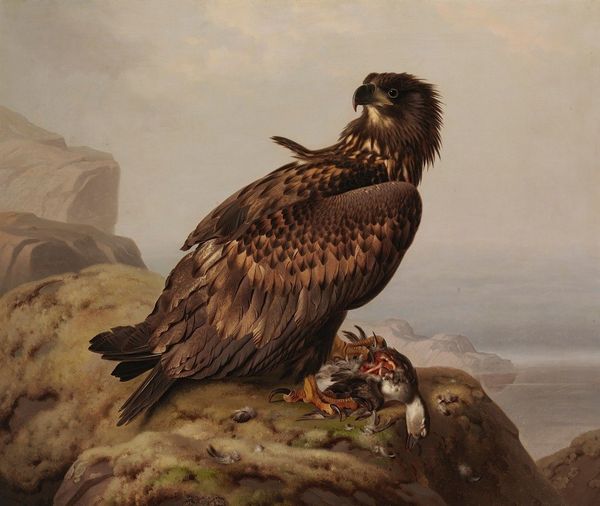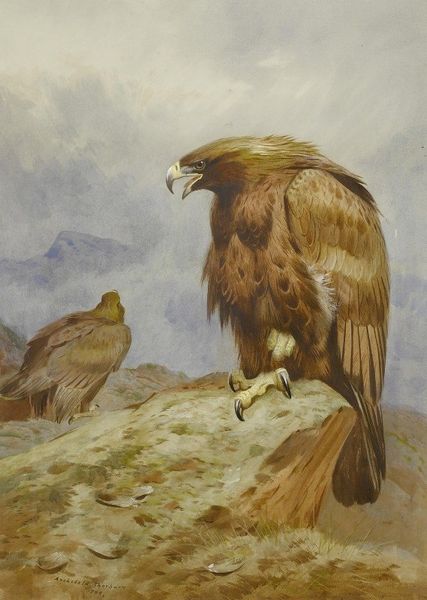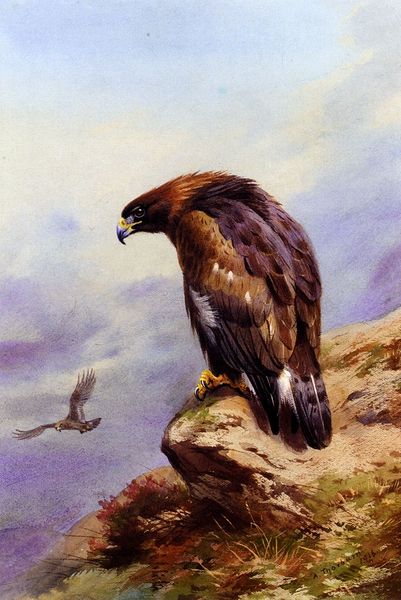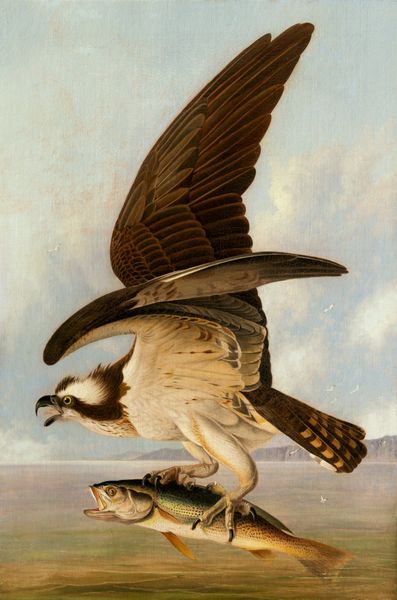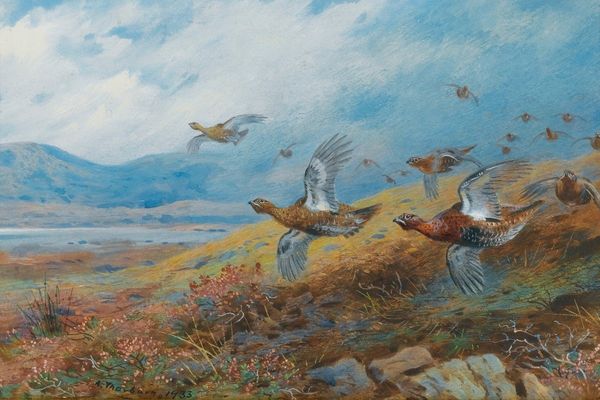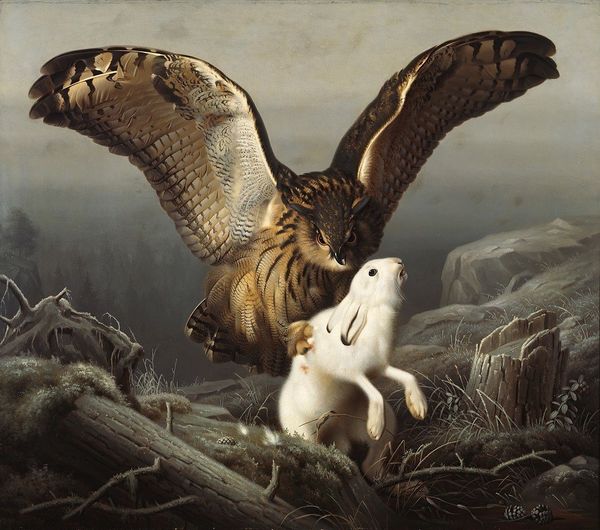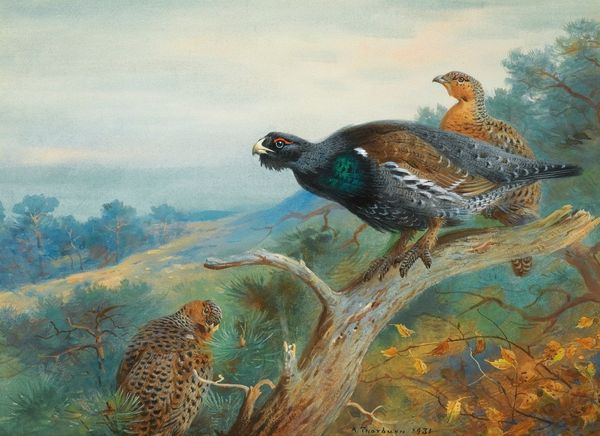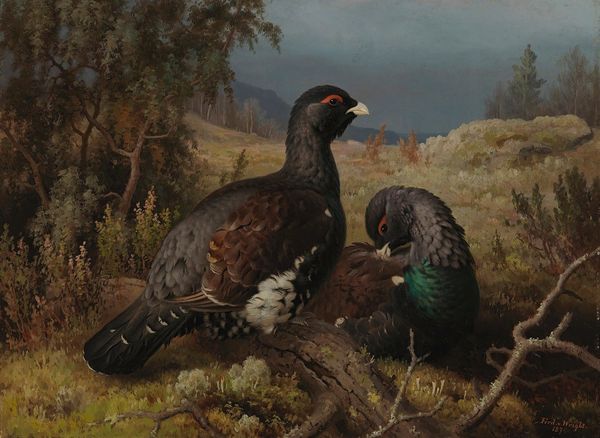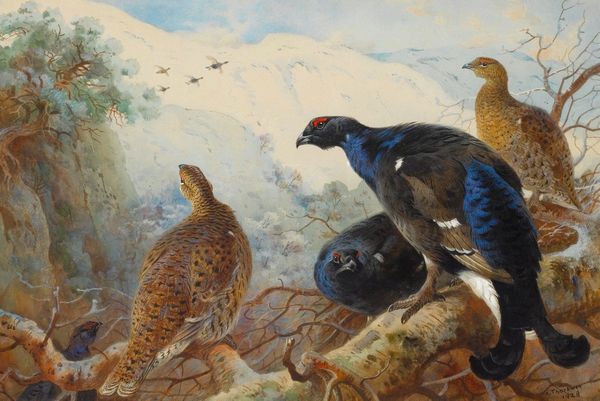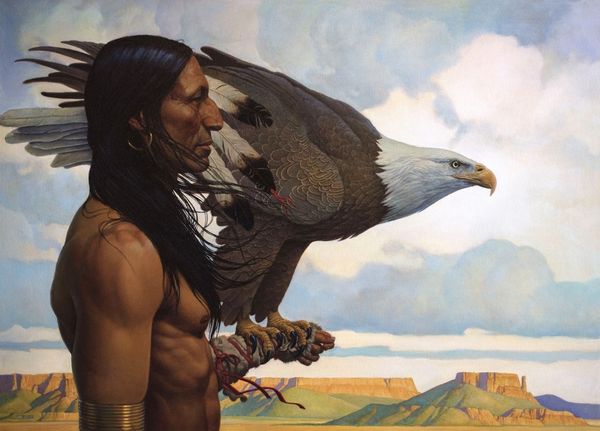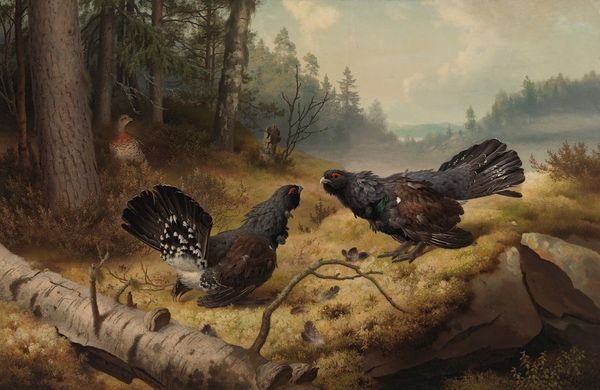
Copyright: Public Domain: Artvee
Ferdinand von Wright painted "Golden Eagle At A Cliff’s Edge," an oil on canvas, in the 19th century. Von Wright's meticulous realism reflects his deep engagement with the natural world, a common theme during the rise of scientific naturalism. The eagle, perched triumphantly over its prey, embodies a complex interplay of power and vulnerability. During this time, the rising nationalistic movements often employed animals as symbols. Here, the eagle represents both the wild, untamed aspects of nature and the imperialistic drive for dominance. Consider how the painting reflects a romanticized, yet brutal, view of nature that often justified social hierarchies. Von Wright has created a captivating study of the natural world. The work draws us into a powerful and unsettling confrontation with the realities of survival. It invites us to contemplate our own place within the natural order and our attitudes toward the environment.
Comments
No comments
Be the first to comment and join the conversation on the ultimate creative platform.
